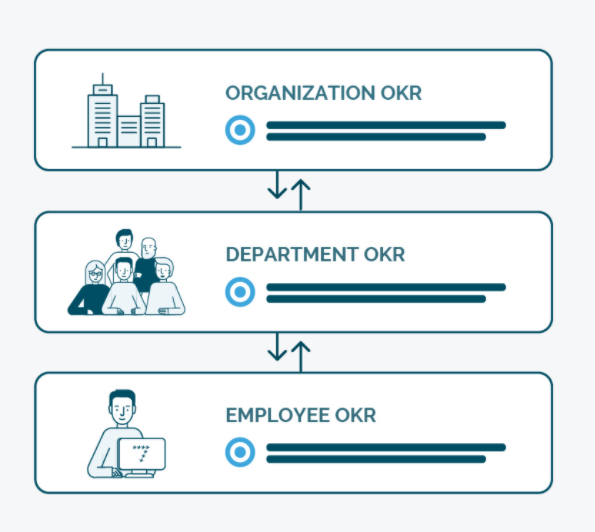Successful business growth is all about scalability. Whether you’re experiencing a natural expansion in your customer base or looking to develop new strategies around increasing the size of your business, you need scaling strategies to ensure that the expenditures of your resources don’t outweigh profits from your newest customers. There are many opportunity costs on the journey to scale your business.
Unlike business growth—wherein businesses increase both their overhead costs and new customers at the same increments—scaling integrates conceptualization, operationalization, and optimization to reduce costs against increasing customer demands. Efforts to scale are essential to both supporting the growth you are experiencing today and ensuring that rapid leaps in your organization’s size are sustainable in the long-term.
Although companies of all sizes recognize the value of scaling, a disarmingly low percentage of leaders actively plan and carry out a scalable business model. If you are in the majority of businesses that have not yet developed a strategy for scaling your organization, consider these simple tactics to get started down the path toward smarter business growth.
1. Define your business objectives
Business growth without direction is as undesirable as no growth at all. If you don’t have the proper infrastructure in place to deliver your products and satisfy customers at the same standard of quality, there’s a good chance your current success will be short-lived as your customers take their business elsewhere.
Before you’re able to actually scale your business, you need to both identify your objectives at a company-wide level, write down your findings, and disperse them across your organization.
Although these objectives may seem intuitive to you, sharing them for the benefit of the entire company promotes a unified vision and approach to your work methods and can greatly increase your ability to scale and break down communication silos. In a study that examined the effects of creating and writing down objectives, companies with recorded goals witnessed a 700% spike in their growth.


But what types of objectives should you tackle, and how can you pair them with your scaling efforts? Perhaps the most opportune method is to examine the areas of your business that are the most inefficient. Because these inefficiencies, by their very nature, will cause you to incur higher investments in resources to make up for them, they become a barricade to your scalability.
If you’re unsure where to begin, ask yourself the following types of questions:
- What steps in my project plan are the most inconsistent in their delivery dates?
- Are there certain responsibilities that invoke higher levels of frustration and burnout from my team members?
- At what point in our customer journey map are prospective buyers most likely to back out of a sale?
By developing measurable and attainable goals that are centered around the aspects of your business that most make scaling a challenge, you can foster a work culture where everyone is focused on the same principle objectives.
2. Develop—and optimize—repeatable processes
Iterable workflows standardize quality expectations on your deliverables and ease the on-boarding process for new hires as they learn the ins-and-outs of their position. As opposed to drafting a new workflow from scratch with each freshly inked contract, repeatable processes give you the infrastructure you need to start your work right away without taking up more bandwidth.
Having a concrete methodology to your work also makes it easier to communicate internally with team members and externally with customers, as it clearly defines the results you expect from your work and by when you will deliver it.
That being said, scaling requires not only a repeatable process but one that is also optimized through the leading tools and innovations on the market. These types of solutions help you both standardize your workflows while pinpointing new avenues to make them faster or more accurate.
As an example, some businesses looking to scale have harnessed the capabilities of intelligent automation, to transform their repeatable tasks into highly efficient, autonomous workflows. Designed to replicate and perform the same responsibilities that your colleagues tackle each and every day, intelligent automation software is programmed to streamline repetitive work by removing the need for manual human labor.
This means that you can accomplish the same work more consistently and with fewer team members assigned to each project. For instance, data entry, document processing, customer support tickets, scheduling blog posts, SMS messages, and emails can all be automated and executed by intelligent automation giving your workforce more time to focus on customer-facing responsibilities.
3. Satisfy existing customers and reduce churn
So often, scaling efforts focus on hunting new sales to the point where you may overlook an equally lucrative path: your existing relationships with customers and preventing churn. Your new customer acquisitions and up-selling tactics should run concurrently to one another, as opposed to one revenue channel dominating the other. This is because improving your customer experience for repeat buyers helps fortify a base of dedicated, reliable consumers from which you can consistently scale.
The numbers around customer retention prove just how vital it is to keep your buyers invested in your brand. Repeat shoppers have a 60-70% chance of converting into future sales and spend more on average when compared to a first-time buyer. Their higher value comes at a certain price, however, as customers who demonstrate loyalty toward your brand may expect a higher quality of customer service and recognition for their business.
The challenge for a scaling business, therefore, is to give your most valuable customers the time and attention they deserve while also servicing the needs of your new sales—especially when your customer inquiry volume is growing faster than your support teams. That’s where tools like knowledge base software come into play.
When integrated to your website, Knowledge Base networks provide instant access to accurate information that pertains to your products, services, or company at large. This helps lower the bandwidth of your other communication channels, such as phone calls and emails, which gives your customer support teams the time they need to fully engage with legacy customers.
4. Accelerate your workforce’s proficiencies to better serve customers
Whether you need to outsource talent or quickly train your recent hires, getting your newest team members to maximum proficiency as quickly as possible is paramount to managing the needs of a flourishing customer base. The more quickly and efficiently new employees can get up to speed, the more professionals are available to offer excellent customer care and help bolster brand loyalty. Regardless of the size of your business or your industry verticals, the key to helping your customer care professionals reach total proficiency starts with comprehensive on-boarding. Organizations that standardize their on-boarding practices yield 54% increase in productivity among their new hires.
Great on-boarding plays a huge role in employee retention efforts as well. According to a report by Glassdoor, companies with a designated on-boarding process improve their new hire retention rates by a staggering 82%. Because so much of successful scaling hinges on your ability to reduce overhead expenses per new employee, the steep cost of high turnover often proves to be a significant inhibiting factor.
To make sure that each new vendor, freelancer, or full-time hire is fully up-to-speed, many mentoring and training programs enlist the aid of a learning management system. These platforms offer a centralized location for storing and organizing your training programs. Whether you need to certify team members on compliance or educate your partners on the features and benefits of your products, Learning Management Systems share pertinent information across your organization without occupying the time and efforts of your other team members.
5. Discover new target audiences
As opposed to natural business growth, scaling requires a solid marketing strategy and intentional decision-making. A large part of this comes from the types of markets you decide to tap into, as well as your ability to position your products and services to new communities. The short-term effects of creating a business model that serves the needs of multiple industries is readily apparent—you’ll more than likely experience higher sales numbers and a broader customer base. But this kind of strategy also helps businesses remain scalable in the future by ensuring that no one type of customer sustains the entire organization.
Venturing into new target audiences always comes with a risk, as there’s no guarantee that these potential buyers will see value in your offerings. If the market is too niche, the time and energy you invest may not payout in the long-run. Fortunately, there are some proactive measures you can take to decrease the liabilities of new market penetration and find the most lucrative opportunities for business growth. As Neil Patel outlines in his article on expanding into new markets, you should:
- Firstly, define the specific market you want to enter. This includes researching the demographics that embody your target audience, their geographical location, and the type of problem you would be able to solve for this hypothetical buyer persona.
- Secondly, validate that your business has a space within this audience. According to Patel, there are four variables to validate: the problem you are trying to solve, your product’s ability to solve that problem, the size of the market, and your ability to monetize your expansion. If any of these points are missing, it may not be worth your time to tap into another audience.
To help uncover the types of problems that a new market might want solved, many marketing teams have turned to tools like customer feedback software to gauge the interest of new potential markets. You can use these platforms to develop custom-tailored surveys at scale and garner key insights around your participants’ answers. This is a particularly valuable tool to utilize during the validation phase of market expansion when you are unfamiliar with these new communities.
6. Fortify your employer brand
When sourcing new talent occupies too much of your hiring team’s time and energy, you may consider another approach to attracting the best of the best: strengthening your employer brand. Employer branding can be defined as the process of actively cultivating your reputation with those outside of your company—including prospective candidates who are currently seeking new opportunities. Excellent employer branding highlights why your company is a great place to work, which provides an implicit promise to your future employees that they will benefit from you just as much as you benefit from their contributions.
Employer branding can also heavily sway candidates who research your company before finalizing their application, which accounts for more than 70% of today’s workforce. Proactively fortifying your online reputation could be the difference between 10 or 100 resumes waiting in your inbox.
Perhaps the easiest strategy to bolster your employer branding is to lean on the existing features of your company that make you stand out against your competitors. You should authentically and earnestly portray the culture, office setting, and employee benefits that have up to this point made your business a success. As proof of concept, one study on leadership and organizational development discovered that companies where leadership was perceived as highly authentic correlated with greater levels of employee happiness and engagement. Letting your authenticity shine on your social media channels, website blog posts, and other external communication channels helps promote an employer image that is enticing and unique as candidates sift through job posting after job posting.
7. Cultivate your employee experience
Scaling businesses that experience a high influx of new customers are often required to saddle their employees with more work than their typical workloads, especially between the time that new customers sign their contracts and when your hiring team is able to onboard extra help. During these high-volume periods, employee retention is at its most challenging and most essential. Businesses incur costs of up to 200% of a highly trained employee’s salary when they have to replace them, which can severely cut into your efforts to minimize expenditures as you grow.
To help your employees stay committed to your organization as you scale, consider cultivating your employee experience. As its name suggests, employee experience is all about improving the journey that each employee has during their career at your company. Everything from pre-hire phone interviews to a person’s final day on the job factors into employee experience.
Fortunately for businesses looking to scale, improving employee experience does not necessarily require excessive spending or further resource allocations. You can jump start a relatively inexpensive employee experience program by first promoting transparent, clear, and considerate paths of communication between employer and employee.
A comprehensive communication strategy requires your management and leadership teams to develop touch points with the employees they oversee at each major junction of the employee life cycle—their first day, last day, and every moment in between. Actively listening to feedback your team has for you, at any point in their journey with your company, is the best way to identify your strengths and weaknesses as an organization and better manage your people.
To sum up..
In order to scale a business, a holistic road-map is fundamental. Developing a cutting edge marketing and business process strategy not only for your customer base, but employees as well is important to upholding brand reputation and loyalty.
Take a close look at your current practices today and ask yourself these questions. What is your organization’s relationship with marketing and scaling efforts? What tools or strategies have you employed that have helped you build your business at scale? Share your thoughts in the comments section below.


